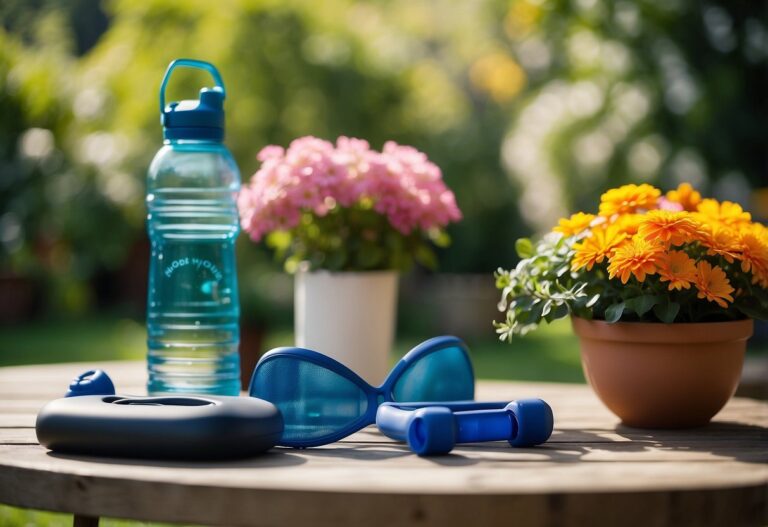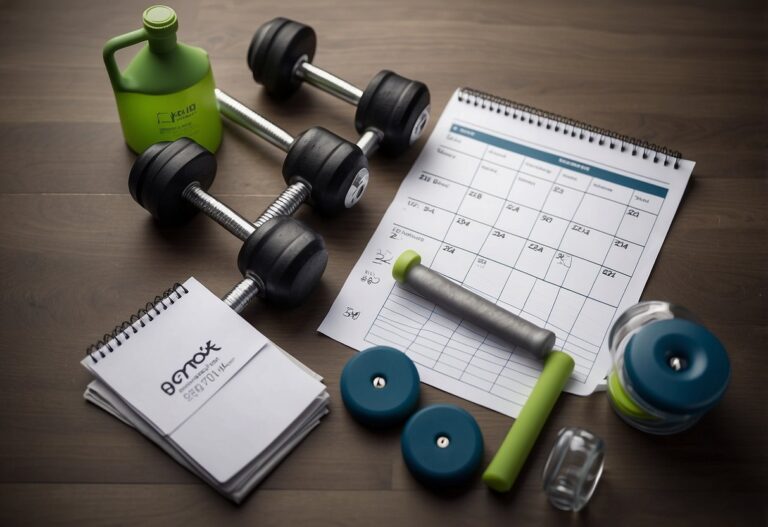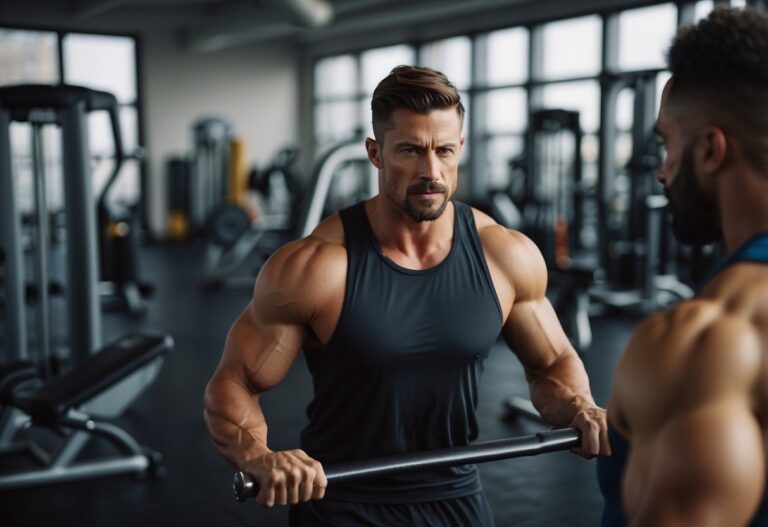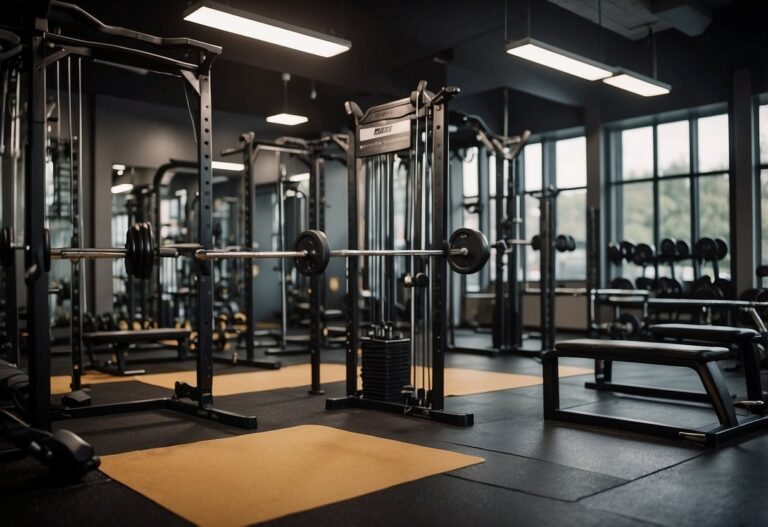When it comes to building strong, sculpted shoulders, focusing on your deltoids is key. Deltoid workouts are not just about looking good; they also play a huge role in improving your overall shoulder strength and stability. By targeting the different heads of the deltoid muscle, you can achieve balanced shoulder development which helps prevent injuries and enhances your performance in various activities.

Are you wondering how to effectively train your deltoids to get the best results? In this article, we’ll guide you through some of the best deltoid workout routines and offer practical tips to help you maximise your gains. Whether you’re a beginner or looking to step up your shoulder training game, these insights will arm you with the knowledge you need to sculpt impressive shoulders.
Arnold Press
The Arnold Press is a fantastic shoulder exercise introduced by Arnold Schwarzenegger.
To perform this move, start by holding a dumbbell in each hand. Keep your palms facing your body at shoulder height.
Press the dumbbells overhead while rotating your palms outward. This motion targets the front, side, and rear deltoids, giving you a comprehensive shoulder workout.
Make sure to keep your shoulder blades down and back during the lift. This will help prevent injury and ensure proper form.
Perform 2 to 4 sets of 8 to 12 reps for muscle building. Doing this regularly will help improve your shoulder strength and endurance.
Lateral Raises
Lateral raises are great for building shoulder width and strength. This exercise targets the lateral deltoids, which are on the outer part of your shoulders. To do it, you’ll typically use dumbbells, but there are variations too.
Using dumbbells, stand with a slight bend in your elbows. Slowly raise your arms to shoulder height, keeping them straight. This movement should be controlled to avoid straining your muscles.
For a twist, you can use a cable machine. This keeps tension on your muscles throughout the movement, which can be very effective. Just remember to keep your form steady to avoid injury.
If you don’t have access to gym equipment, try a towel lateral raise. Place a towel on a smooth surface, lean against it, and slide your forearm upwards. This can be handy if you’re working out at home.
Front Dumbbell Raise
The front dumbbell raise is a great exercise to target your anterior deltoid, which is the front part of your shoulder. To start, hold a dumbbell in each hand with your arms by your sides and your palms facing your body.
Keep a slight bend in your elbows to avoid strain. Slowly raise the dumbbells in front of you until your arms are parallel to the ground. Hold for a moment, then lower them back down slowly.
Make sure your spine stays straight, and avoid swinging your body. Performing this in front of a mirror can help you check your form. This exercise helps in building shoulder definition and strength. If you’re interested, you can find more advice from Dorian Yates on front dumbbell raises.
Rear Delt Fly
The rear delt fly is a great exercise for strengthening your rear deltoid muscles. It focuses on the back part of your shoulders, helping to improve posture and shoulder stability.
When performing the rear delt fly, it’s important to keep your movements controlled. Do not use momentum to lift the weights. Instead, focus on squeezing your shoulder blades together at the top of the movement.
Try using a flat bench to make the exercise stricter. This can help if you find yourself swinging your body too much. You can learn more from this guide.
Incorporate this exercise into your routine to build strong, sculpted shoulders.
Seated Dumbbell Press
The seated dumbbell press is a great exercise for your shoulder muscles, specifically the deltoids. To start, set up an adjustable bench to 90 degrees. Hold a dumbbell in each hand with a neutral grip.
Sit down and use your knees to help lift the dumbbells to shoulder height.
While seated, press the dumbbells overhead until your arms are fully extended. Make sure to exhale as you push up and inhale as you bring the weights back down. Keep your back straight and core tight during the movement. This helps prevent injury and ensures proper form.
If you’re looking for a video tutorial, check out this how-to video. It provides a clear visual guide on performing the exercise safely.
Face Pull
Face pulls are fantastic for targeting your rear deltoids. This exercise helps you develop shoulder strength and improve posture.
To perform a face pull, use a rope attachment on a cable machine. Stand with your feet shoulder-width apart, and grasp the rope with both hands. Make sure to keep your palms facing each other.
Pull the rope towards your face, leading with your elbows. Engage your core and squeeze your shoulder blades together. Aim for a slow, controlled movement to get the best results.
You don’t need a lot of weight for this exercise. Focus on form and control to feel the burn in the right muscles.
Dumbbell Shoulder Press

The dumbbell shoulder press is a great exercise to build your deltoid muscles. It mainly targets your front and side delts, helping you achieve strong and defined shoulders.
To perform the dumbbell shoulder press, sit on a bench with back support. Hold a dumbbell in each hand at shoulder height, then press them straight up until your arms are fully extended.
Lower the dumbbells back down slowly to the starting position. You should feel your shoulder muscles working hard. For better results, keeping your core tight and your back straight is important.
Incorporate this exercise into your routine to see improvements in your shoulder strength and muscle definition. If you’re just starting out, aim for 2-3 sessions per week. Check out a step-by-step guide for more detailed instructions.
Cable Lateral Raises
Cable lateral raises are fantastic for building your shoulder muscles. This exercise targets your side deltoids, which help you get that wider, more defined look.
To get started, set the cable machine to the lowest notch. Stand with one side facing the machine, grab the handle with the opposite hand, and raise your arm to the side.
Remember to keep your elbow slightly bent and avoid rotating your arm. Hold the raised position for a couple of seconds, then slowly lower it back down. Consistency and proper form are key to seeing great results.
For more details, check out Tiger Fitness.
Upright Rows
Upright rows are a fantastic move for targeting your shoulders and upper back. They help you build strength and improve your posture.
To perform an upright row, start with your feet shoulder-width apart. Hold a barbell, dumbbells, or kettlebells close to your body. Make sure your palms face your thighs and grip the weights with an overhand grip.
Keep your back straight, chest up, and engage your core. Lift the weights towards your chin, leading with your elbows. Only raise them to shoulder level to avoid straining your shoulders.
For variation, you can use dumbbells instead of a barbell. This can help reduce wrist strain and offer more control over the movement.
Dumbbell Shrugs
Dumbbell shrugs are great for building your trapezius muscles. They help give your shoulders a well-rounded look.
To start, stand with your feet shoulder-width apart. Hold a dumbbell in each hand by your sides. Keep your back straight and your core tight.
Lift your shoulders straight up towards your ears, like you’re trying to touch them. Hold for a moment and then slowly lower the weights back to the starting position.
Avoid rolling your shoulders as this can lead to injury. Focus on lifting straight up and down. Keep your movements controlled.
For best results, aim for 3 sets of 10-15 reps. Adjust the weight as needed to ensure proper form. Check out this dumbbell shrug guide for more details and variations.
Fundamentals of Deltoid Workouts
When working on your deltoids, it’s essential to understand the muscle’s structure and the benefits of having strong shoulders. The following points will guide you through these fundamentals.
Anatomy of the Deltoid Muscle
The deltoid muscle is split into three parts: the anterior (front), lateral (side), and posterior (rear) deltoids. Each part has its own role in shoulder movement and stability.
The anterior deltoid helps lift your arm forward. You engage it with exercises like front raises. The lateral deltoid is responsible for side lifting actions, such as performing lateral raises. The posterior deltoid aids in pulling movements, like bent-over rows.
Understanding these divisions helps you target each section more accurately, ensuring balanced development. Neglecting one part can lead to imbalances, affecting performance and aesthetics.
Benefits of Strengthening Deltoid Muscles
Strengthening your deltoid muscles enhances both physical appearance and functional strength. You gain broader, more defined shoulders, which improve your overall physique.
Strong delts provide better shoulder stability and mobility. This is crucial in many daily activities and sports. For example, a stable shoulder joint improves performance in exercises like bench presses and overhead presses.
Additionally, strong deltoids help prevent injuries by supporting shoulder movements and distributing load evenly. Whether you’re lifting weights or doing chores, having robust deltoids ensures safer and more effective movements.
Overall, investing time in deltoid workouts pays off in improved strength, stability, and appearance, making them a vital part of any workout routine.
Effective Deltoid Exercises
Strengthening your deltoids can significantly improve shoulder stability and aesthetics. Here are some of the most effective exercises to build robust deltoid muscles.
Barbell Overhead Press
The barbell overhead press is a fundamental exercise for building shoulder strength. Stand with your feet shoulder-width apart and grip the barbell slightly wider than shoulder-width. Press the bar directly overhead by extending your arms fully and then lower it back to shoulder height.
Keep your core engaged to support your lower back. This exercise targets mainly the anterior and lateral deltoid heads but also involves the triceps and upper chest. Starting with a lightweight is advisable to perfect your technique before gradually increasing the weight.
Proper form includes:
- Standing with feet shoulder-width apart.
- Pressing the barbell overhead.
- Engaging the core throughout the movement.
Lateral Raises
Lateral raises are excellent for isolating the lateral deltoid. Stand with your feet hip-width apart, holding a dumbbell in each hand. Keep a slight bend in your elbows and raise the dumbbells to the sides until they reach shoulder height. Lower them back down slowly.
It’s crucial to avoid swinging the weights, as this can reduce the effectiveness and increase the risk of injury. Focus on moving in a controlled manner and engaging your shoulder muscles throughout the exercise.
Key tips include:
- Raising dumbbells to shoulder height.
- Maintaining a slight bend in your elbows.
- Controlling the weight to avoid swinging.
Front Raises
Front raises target the anterior deltoid, enhancing the front of your shoulder. Stand with your feet shoulder-width apart, holding a dumbbell in each hand at thigh level. With a slight bend in your elbows, raise the dumbbells in front of you to shoulder height and then lower them back down.
Ensure your movements are smooth and controlled, which helps maintain tension on your shoulders. This exercise can be performed alternatively with a barbell, but using dumbbells allows for a greater range of motion and better muscle engagement.
Remember to:
- Raise dumbbells in front to shoulder height.
- Keep elbows slightly bent.
- Maintain smooth and controlled movements.
Tips for Optimising Deltoid Workouts
Maximising deltoid workouts requires attention to proper form, incorporating a variety of exercises, and ensuring recovery to prevent injury. By focusing on these key areas, you can achieve better results and build stronger, more defined shoulders.
Proper Form and Technique
Maintaining proper form is essential for effective deltoid workouts. Incorrect form can lead to injuries and less effective workouts. Always keep your back straight and avoid arching it, especially during exercises like the shoulder press. When lifting weights, engage your core muscles to stabilise your body and reduce strain on your shoulders.
Start with lighter weights to master the technique before increasing the load. Keep your movements slow and controlled, focusing on using your shoulder muscles rather than momentum. For exercises like dumbbell front raises and Cuban presses, ensure full range of motion without swinging your arms.
Using the correct form not only improves results but also minimises the risk of injuries, making your workouts safer and more productive.
Incorporating Variations
Variety is vital for comprehensive shoulder development. Mixing different exercises targets all parts of the deltoids: anterior, medial, and posterior. For example, alternate between overhead presses and incline bench raises to engage different muscle fibres.
You can also try using machines, free weights, and bodyweight exercises to keep your routine fresh. For your rear delts, exercises like face pulls and single-arm cable pulls are effective.
Incorporating unique movements like the 1-and-½ reps method shocks the muscles and encourages growth. Be sure to vary your workout every few weeks to prevent plateaus and continuously challenge your shoulders.
Recovery and Injury Prevention
Recovery is as important as the workout itself. Giving your muscles time to heal allows them to grow stronger. Ensure you get enough rest between deltoid workouts, typically 48 hours. Adequate sleep and a balanced diet rich in protein aid muscle recovery and growth.
Using proper warm-up and cool-down routines is crucial. Spend at least 5-10 minutes warming up with light cardio and dynamic stretches targeting the shoulders. Post-workout, use static stretches to improve flexibility and reduce muscle stiffness.
Pay attention to any signs of discomfort or pain. Listen to your body and don’t ignore warning signs of overtraining or potential injuries. If you experience persistent pain, consider consulting a healthcare professional.
By incorporating these tips, you’ll optimise your deltoid workouts and reduce the risk of injury, leading to better results and healthier shoulders.







